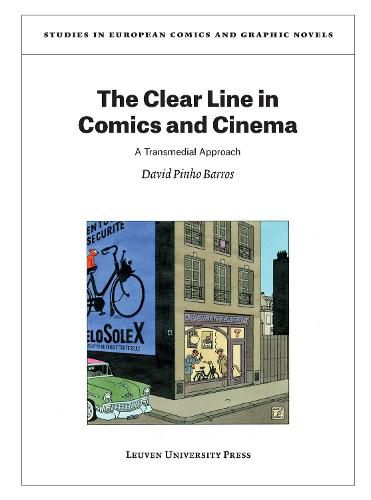Readings Newsletter
Become a Readings Member to make your shopping experience even easier.
Sign in or sign up for free!
You’re not far away from qualifying for FREE standard shipping within Australia
You’ve qualified for FREE standard shipping within Australia
The cart is loading…






Historical and theoretical analysis of the clear line style in comics and cinema
The clear line, a term coined in 1977 by Dutch essayist and artist Joost Swarte, has become shorthand in the field of comics studies for the style originally developed by Herge and the Ecole de Bruxelles. It refers to certain storytelling strategies that generate a deceptively simple, lucid, and hygienic narration: in Philippe Marion’s words, it is a style made out of light, fluidity and limpid clarity.
By cataloguing and critically analysing clear line comics from historical and theoretical perspectives, this book offers a new outlook on the development of the style in the 20th and 21st centuries, especially focused on the context of the European bande dessinee. In addition, it pioneeringly expands the concept of clear line to other artistic domains by introducing and defending its transmedial use, which is particularly relevant for the understanding of the oeuvres of certain filmmakers of the 20th century working in the postwar period, such as Yasujiro Ozu in Japan, Jacques Tati in France and Frank Tashlin in the United States. The Clear Line in Comics and Cinema is therefore a key theoretical work for both bande dessinee enthusiasts and comics scholars, as well as a fundamental contribution to present-day film studies and transmedial narratology.
$9.00 standard shipping within Australia
FREE standard shipping within Australia for orders over $100.00
Express & International shipping calculated at checkout
Historical and theoretical analysis of the clear line style in comics and cinema
The clear line, a term coined in 1977 by Dutch essayist and artist Joost Swarte, has become shorthand in the field of comics studies for the style originally developed by Herge and the Ecole de Bruxelles. It refers to certain storytelling strategies that generate a deceptively simple, lucid, and hygienic narration: in Philippe Marion’s words, it is a style made out of light, fluidity and limpid clarity.
By cataloguing and critically analysing clear line comics from historical and theoretical perspectives, this book offers a new outlook on the development of the style in the 20th and 21st centuries, especially focused on the context of the European bande dessinee. In addition, it pioneeringly expands the concept of clear line to other artistic domains by introducing and defending its transmedial use, which is particularly relevant for the understanding of the oeuvres of certain filmmakers of the 20th century working in the postwar period, such as Yasujiro Ozu in Japan, Jacques Tati in France and Frank Tashlin in the United States. The Clear Line in Comics and Cinema is therefore a key theoretical work for both bande dessinee enthusiasts and comics scholars, as well as a fundamental contribution to present-day film studies and transmedial narratology.